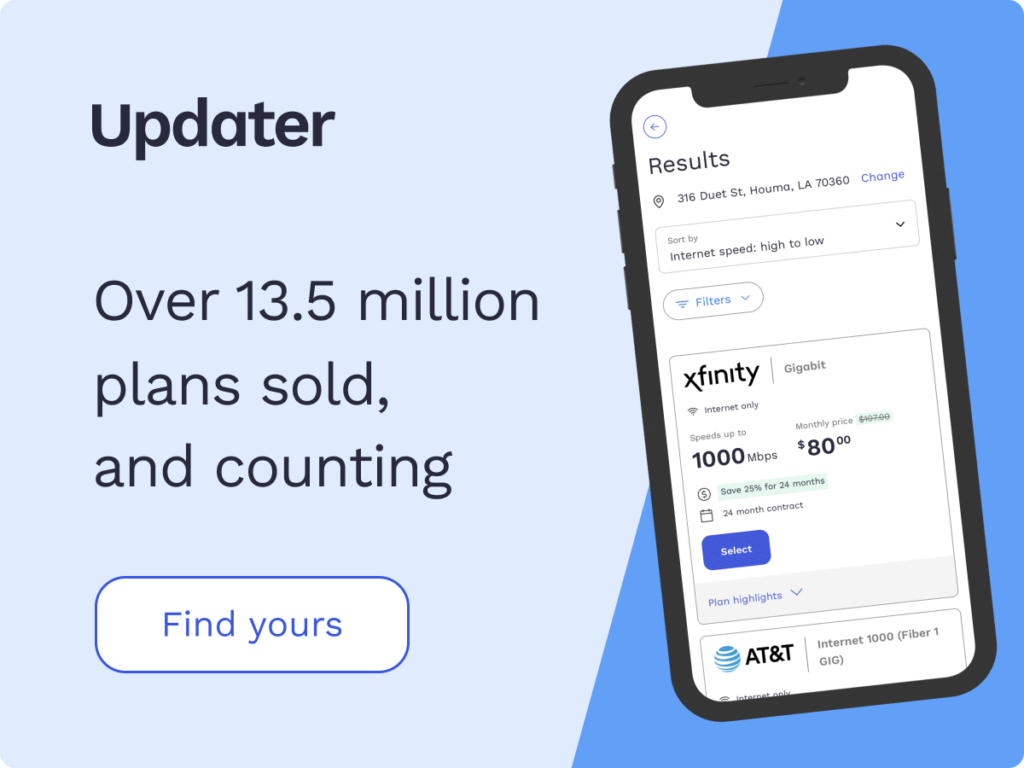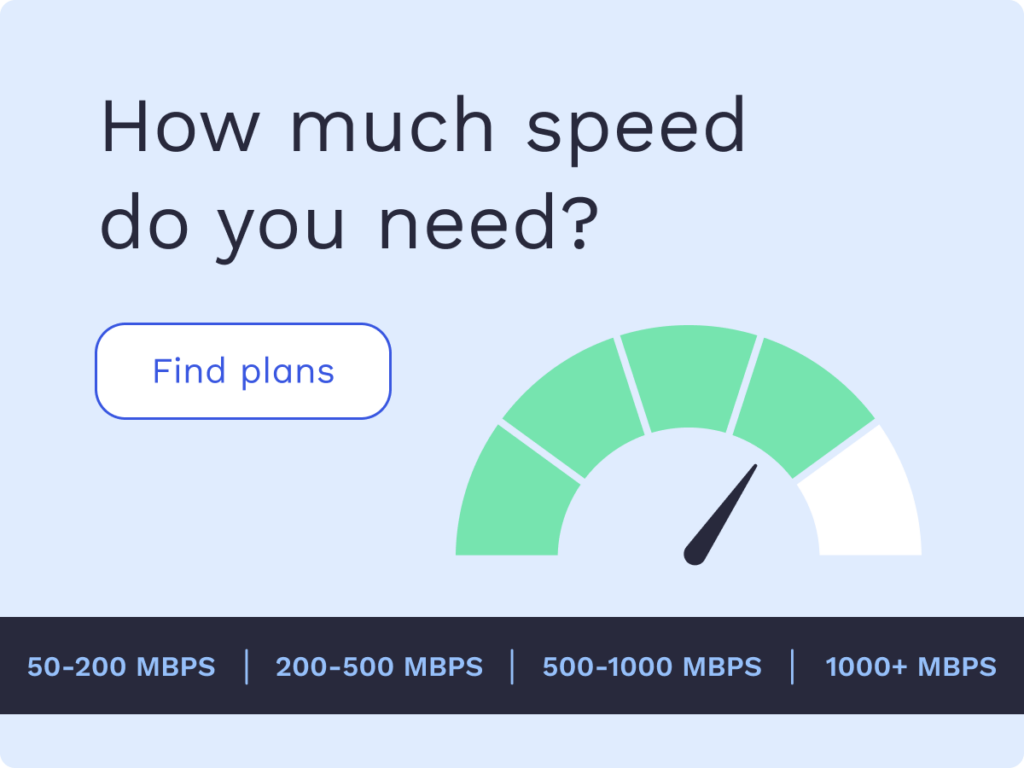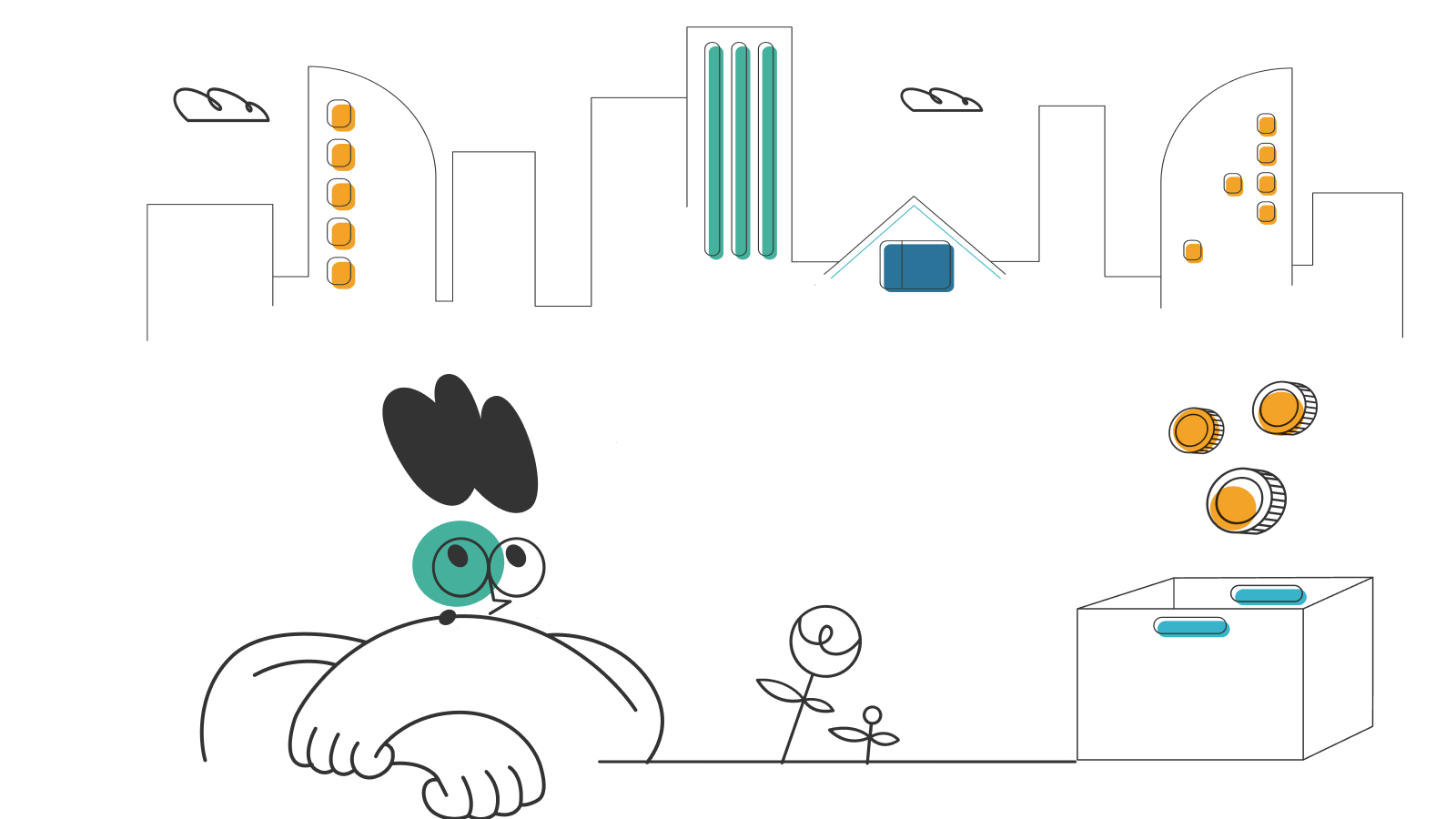Fiber vs Cable Internet: What’s the Difference?

Fiber and cable internet both provide users with fast service, making it possible for a wide range of gamers, people working from home, and those who love streaming their favorite content to get the speeds they need. With both cable and fiber service, you get more than enough download speed and for most users, the upload speeds are also adequate to get the job done.
What else makes cable and fiber similar? You have a vast array of choices when it comes to providers, making it relatively easy to find at least one of them near your home. One of the biggest differences between the two is fiber can give you symmetrical download and upload speeds, while your upload speeds with cable will typically be significantly slower than what you get for download.
There’s more to know about these two popular internet service options. So, we’ve put together this comprehensive fiber vs. cable internet guide to take a deep dive into these two types of service, point out a few prominent internet service providers (ISPs), and answer common questions.
- What is fiber internet?
- Which ISPs provide fiber internet service?
- What is cable internet?
- Which ISPs provide cable internet service?
- Comparing fiber vs cable internet
- Frequently asked questions (FAQs)
What is fiber internet?
Fiber, or fiber-optic cables made with glass fibers that carry pulses of light to transmit data. Just as electric signals flow through copper cables, light travels through these glass fibers, moving data at almost the speed of light. Each glass fiber is slightly thinner than a human hair, or in the case of multifiber cable, slightly thicker. It has become the means to provide faster, more reliable internet speeds to businesses and residences alike.
When researching fiber service, you’ll find that it’s usually symmetrical. What does that mean? A symmetrical connection means that the upload and download speeds are equal. On the other hand, an asymmetrical connection means that the download speed is faster than the upload speed. One of the selling points for fiber internet is that it provides a symmetrical connection. No matter how fast your download speed is, the upload speed will be the same.
To illustrate why that matters, imagine having an asymmetrical connection with a download speed of 50Mbps and an upload speed of only 2Mbps. That’s great if you’re downloading a movie or video since it may be done by the time you come back from making a snack. But uploading your photos, videos, and other large files may take a long time. And participating in a video-conferencing call, which requires stable speeds in both directions, might be less than optimal. With a fiber connection, you’re more likely to have symmetrical speeds, so these issues won’t affect you significantly.
Another advantage of fiber comes into play when sharing high-definition or data-heavy content while video-conferencing. This can be a challenge if upload speeds are slower than your download speeds.
For example, if you’re a videographer who has recently recorded a wedding, you may want to share some video clips with a client during a video conference. If you shot it in high-definition using an HDV 720 format and it’s an hour-long, it would be about 11GB.
With a fiber connection, your upload and download speeds will be around the same, so it’s not uncommon for customers to get 300Mbps for both uploading and downloading. That means you could deliver an 11GB file in around 30 seconds.
Which ISPs provide fiber internet service?
Fiber is used predominantly in highly populated areas. A few of the top fiber-optic internet providers in the US include:
- AT&T Fiber – Coverage in 21 states
- CenturyLink Fiber – Coverage in 53 states
- Cincinnati Bell – Coverage in 18 states
- Consolidated Communications – Coverage in 19 states
- EarthLink Fiber – Coverage in 21 states
- TDS Telecom – Coverage in 25 states
- Verizon Fios – Coverage in 10 states
- Windstream – Coverage in 50 states
The monthly price for a fiber-optic internet plan ranges from about $30 to $100/month, depending on which plan and ISP you choose.
What is cable internet?
Cable internet is delivered to your home using the same copper coaxial cable used for cable TV service. Unlike fiber, which requires costly infrastructure, cable internet uses existing infrastructure installed by cable TV companies. It is available to almost 90% of the population in the US, making it the most common internet service provided.
Cable internet is asymmetrical. While offering fast download speeds, some as high as 500Mbps, cable ISPs offer maximum upload speeds that are much lower. Some even cap upload speeds at around 30 or 35Mbps, no matter the download speed you pay for.
New technology means that cable ISPs can offer fast internet speeds of as much as a gigabit (1000Mbps), but the modems to support these speeds are not readily available (or affordable) for residential installation. Although they are likely not available for your residential plan, they show the future capability of cable internet as a competitive internet service option.
Which ISPs provide cable internet service?
Many ISPs provide multiple options for internet connections, so you may see companies that provide fiber connections also offer cable or digital subscriber line (DSL) in some areas. In addition, cable TV providers can become ISPs by bundling the two services together. Here are a few of the providers who offer the widest cable coverage:
- Cox Communications – Coverage in 19 states
- Mediacom Cable – Coverage in 22 states
- Sparklight – Coverage in 21 states
- Spectrum – Coverage in 42 states
- Suddenlink Communications – Coverage in 17 states
- TDS Telecom – Coverage in 11 states
- Vyve Broadband – Coverage in 16 states
- Windstream – Coverage in 10 states
The typical cost of a cable internet connection ranges from about $30 to $125/month, depending on the provider and the plan.
Comparing fiber vs cable internet
As you explore the ISPs that offer services in your area and what plans they have available, you’ll want to be clear on the pros and cons of cable and fiber. That way, you can decide what type of service and which plan best suits your needs.
Pros for cable internet
- Availability – While the Federal Communications Commission (FCC) estimates that about 40% of the population has access to fiber-optic connections, cable is available to nearly 90% of the US.
- Affordability – In general, cable prices are a little lower than fiber. Since it can also be bundled with your existing cable TV plan, you won’t have the cost of a new service connection if you subscribe to TV service.
Cons for cable internet
- Dependability – Cable internet operates on shared bandwidth, so users often experience bandwidth loss due to heavier internet traffic during peak hours. Loss during peak hours varies, but it may be as high as 20-40% of your plan’s bandwidth.
- Asymmetrical speeds – With asymmetrical speeds, users typically have enough download speed to handle bandwidth-intensive activities like streaming and large downloads. However, lower upload speeds can adversely affect activities like online gaming and video conferencing.
Pros for Fiber internet
- Speed and reliability – Fiber connections are very fast, and the technology is resistant to damage that affects copper installations, like weather damage or corrosion.
- Dependability – Fiber-optic connections rely on light for transmission, not electrical signals, so they are mostly unaffected by power surges, voltage fluctuation, and outages.
Cons for DSL internet
- Affordability – Fiber is more expensive than cable due to the investment in infrastructure needed by ISPs who want to offer the service. But as it becomes more common, prices have come down, and in some areas, it’s not much more than cable.
- Availability – Fiber is less available as a service, with only about 40% of the population having access to it.
Both fiber and cable provide ample bandwidth for streaming services and large downloads. However, if you expect to have multiple devices always connected and in use, and if you expect you’ll need enough bandwidth for heavy usage during peak hours, then fiber may be a better option for you.
On the other hand, if you live in an area where both are available but need to save a few dollars, cable may be the way to go. You should explore all the options available through ISPs near you before making your decision.
Frequently asked questions (FAQs)
What is cable internet?
Cable internet is a service delivered through the same copper coaxial cable that provides cable TV service. Cable connections are generally asymmetrical, which means that the download speed is greater than the upload speed. Since cable internet has relatively fast download speeds and ample bandwidth, it can be a good choice in residential areas that don’t have affordable fiber optic plans.
What is fiber internet?
Fiber-optic cable is made with either one glass fiber or a bundle of glass fibers that use pulses of LED light to transmit data. In copper cable (like coax or phone lines), electric signals flow through the copper, carrying data. But in fiber-optic cable, pulses of LED light carrying data travel at 70% the speed of light from one point to another. The glass fibers are about the thickness of a human hair, depending on the size and design of the cable.
Which is faster—cable or fiber internet?
Cable internet for most residential areas maxes out around 500Mbps, depending on the provider. On the other hand, some ISPs offer fiber internet plans with as much as 1000Mbps. But the more significant difference is seen in the upload speed. A fiber plan of 1000Mbps download speed would also offer the same for uploads, while cable internet upload speeds often max out at about 50Mbps.
What are the differences between cable internet and fiber?
Cable internet is delivered via the same copper coaxial cables that provide your home with cable TV. Fiber requires its own fiber-optic cable infrastructure throughout a neighborhood, community, town, or municipality for an ISP to offer it as a service. Since cable operates on infrastructure that is available in many areas, it is usually a little cheaper than fiber.
Is cable internet more reliable than fiber?
Both cable and fiber are generally very reliable. However, while cable internet users may experience loss of bandwidth during peak hours when there’s heavier traffic, fiber can handle the traffic seamlessly.
Are fiber and cable internet available in remote areas?
Neither is readily available in remote and rural areas. Due to the nature of their respective infrastructures, they tend to be more available in densely populated areas. If you live in a remote area, you may find DSL and satellite internet be more available.
Which is better for gaming—cable or fiber internet?
Both fiber and cable internet have low lag time, or latency, which is something gamers are concerned with. But the symmetrical speeds offered by fiber would likely outperform cable because cable’s upload speeds are typically slower than their download speeds.
What kind of equipment does fiber or cable internet require?
Fiber and cable providers will likely include a modem or router as part of their installation. You’ll be able to connect computers with a hardline directly to the router or use its Wi-Fi signal to connect your computer and mobile devices.
Is a symmetrical or asymmetrical connection better?
A symmetrical connection provides the same upload and download speeds, which can be very advantageous for some users. If you’re weighing cable vs. fiber, you should consider whether you participate in activities such as online gaming or frequent video calls. In those scenarios, a symmetrical connection through a fiber internet provider may be ideal.
Since cable internet is usually more affordable, some users may view the asymmetrical nature of cable internet as an acceptable tradeoff to save on monthly internet bills. This is especially true for users who don’t require excessive upload speeds.
*Pricing varies by location and availability. Speeds may vary. All prices subject to change; for current pricing and availability visit our internet service page. Prices as of 3/27/22.
Disclosure | Updater articles are based on our own data and research, independent from partner relationships. We are not compensated by partners for information and opinions presented here. Our Editorial Terms of Service can be found here.














